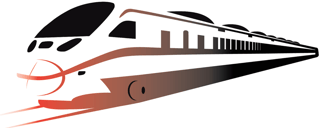By: Greg Hoile on June 20th, 2016
Rail Industry, Structured EAM & Maximo
Maximo | EAM | Rail Industry
 The rail industry presents a unique asset management challenge -- from the 7000+ miles of track in the US to 20000+ miles in the Western Europe. If that is not staggering enough, consider these additional points unique to the rail industry:
The rail industry presents a unique asset management challenge -- from the 7000+ miles of track in the US to 20000+ miles in the Western Europe. If that is not staggering enough, consider these additional points unique to the rail industry:
|
· Operations: |
Maintaining a reliable service |
|
|
Revising and communicating schedules based on service impacts |
|
· Infrastructure: |
Linear assets with changing features along their length |
|
Older asset base, not all assets may be accounted for or tracked |
|
|
|
Distributed assets serviced by a distributed and specialized workforce |
|
· Rolling stock: |
Locomotive, passenger and freight car configuration management |
|
|
Real-time rolling stock health monitoring |
|
|
Scheduling rail car and repair shop availability |
|
· General: |
Multiple sources of asset, maintenance and procedural truth |
|
|
Employment agreements define responsibility and accountability |
|
|
State or government funding restrictions or guarantees |
|
|
No direct competition, no incentive or reason to improve |
|
|
Work processes may be learned rather than documented |
|
|
Existing performance is hard to measure or highly subjective |
|
|
Different areas of the organization have different goals |
This leads to the question -- how do I manage all these moving parts?
Structured EAM is the Answer
The answer lies in implementing a structured EAM (Enterprise Asset Management) program, which can be fundamental your strategy. For the transportation industry, it can help to organize previously chaotic and hidden information and make it manageable. However, the EAM program must be introduced in a way that is sensitive to these key areas:
Safety – all other aspects your organization are secondary to the safe movement of people over the infrastructure. The active management of safety requires the capturing, standardization and analysis of data at its source in order to ensure safe operation.
Culture – transportation organizations tend to have a highly skilled, independent and experienced workforce. Processes, procedures and authority can be ingrained and organic. The workforce needs to be and feel listened to. Subject Matter Experts (SME’s), leaders with authority who represent primary areas of the business and who want positive change, will champion the EAM effort and its initiatives back to the workforce.
Dispersed Environment – the environment that agencies are responsible for is inherently dispersed over a wide area and highly complex. Assets cross and combine with each other, affect each other’s performance and may have very different characteristics along their length. Individual asset cost is not necessarily the primary concern when the service must operate over this entire environment.
Where to Start Your Journey?
Over the past 11 years, Interloc Solutions has worked at all levels of the major transit and transportation organizations in the United States. This experience is critical in being able to work successfully with all elements within the corporation towards defining, measuring and implementing any kind of improvement program.
Interloc has a long history of working within highly regulated transportation environments including Amtrak and BART, two of the largest organizations dedicated to moving people within North America.
Learn more about Interloc's experience in the Rail Industry!
About Greg Hoile
Greg is the VP of Professional Services at Interloc Solutions. Greg is a seasoned Maximo veteran with many years in the Rail & Transportation Industries.


